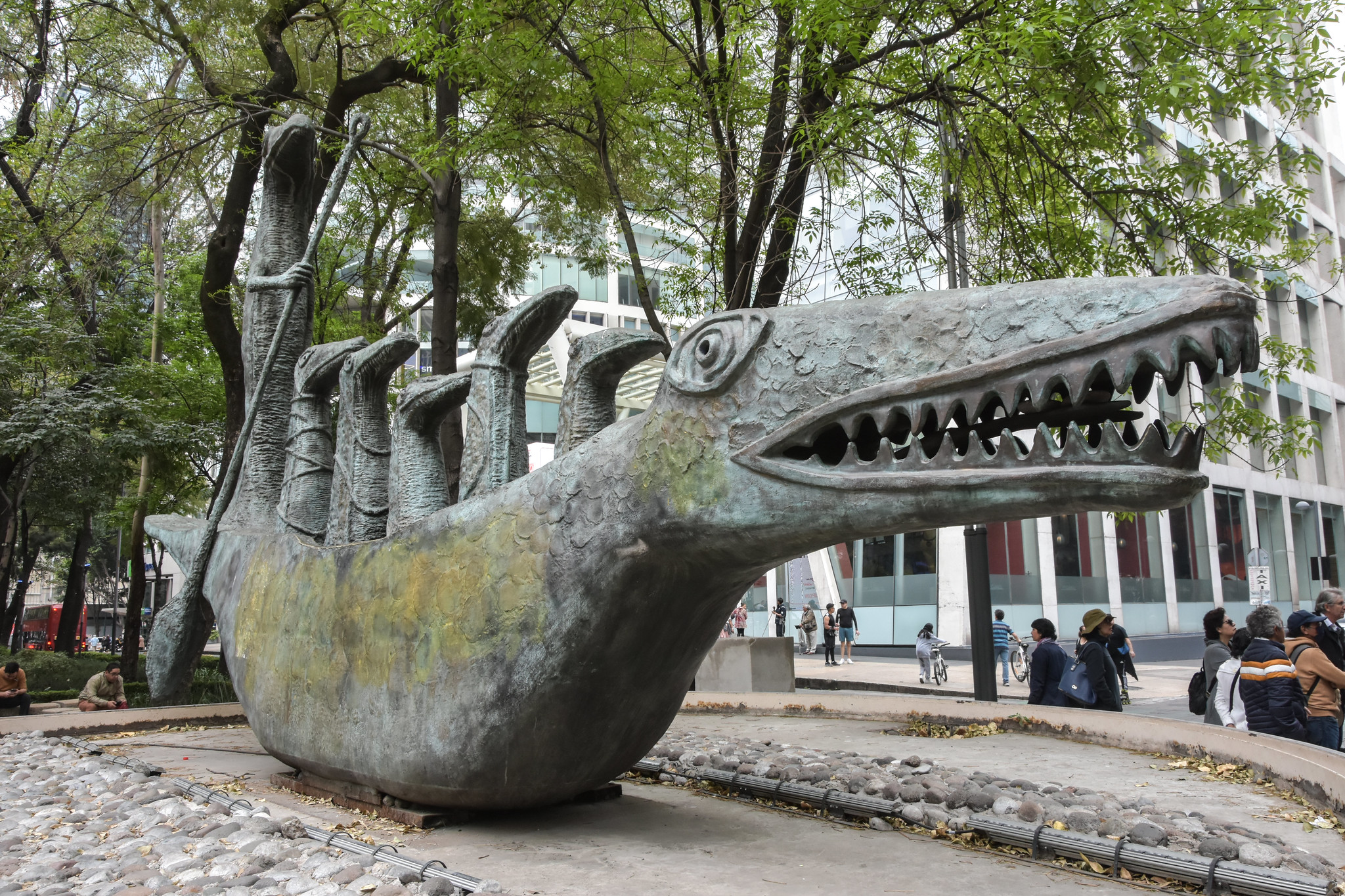
Cocodrillo, de Leonora Carrington, es una de las esculturas públicas más populares de Ciudad de México. Carrington donó la obra a la ciudad en 2000. A veces se le llama How Doth the Little Crocodile (español: Cómo hace el pequeño cocodrilo), tomando el título directamente del poema de Lewis Carrol del mismo nombre. Se dice que el verso de Carrol inspiró la escultura gigante de bronce y un cuadro del mismo año (1998). Se podría pensar que Carrington también se inspiró en el monumento de Tomás Chávez Morado a Alonso García Bravo, de 1976 . Esto no ha sido documentado, aunque el motivo del barquero de pie aparece en otros monumentos de la ciudad.
El cocodrilo más alto, de unas cinco toneladas de peso y 8,5 metros de longitud, mide 4,5 metros. De hecho, es probablemente una de las esculturas públicas más fotografiadas de la ciudad.
Originalmente, el Ayuntamiento colocó la escultura en una fuente abandonada de la Section 2 del Parque de Chapultepec . Pero en 2006, la propia artista eligió un emplazamiento preferente en el Paseo de la Reforma. El traslado fue acompañado con gran fanfarria.
Carrington murió en 2011, una de las artistas más célebres del siglo XX de Ciudad de México. De origen británico, fue también pintora surrealista y novelista. Habiendo pasado la mayor parte de su vida adulta en la Ciudad, a menudo se la recuerda como una de las participantes más longevas del movimiento surrealista de la década de 1930. En la actualidad, la Universidad Autónoma Metropolitana (UAM) está trabajando para abrir su casa y estudio como centro cultural y museo.

Cercano a 0.06 kms.

Cercano a 0.10 kms.

Cercano a 0.12 kms.

The seat of Peru's diplomatic mission to Mexico . . .

Uno de los grandes mercados de Lagunilla en un cavernoso edificio histórico.

One of the most prominent theatrical stage in all of Mexico . . .

A 1978 work by one of Mexico City's most-acclaimed sculptors . . .

A high-rise gallery of art and architecture on the very eastern edge of Tlatelolco . . .